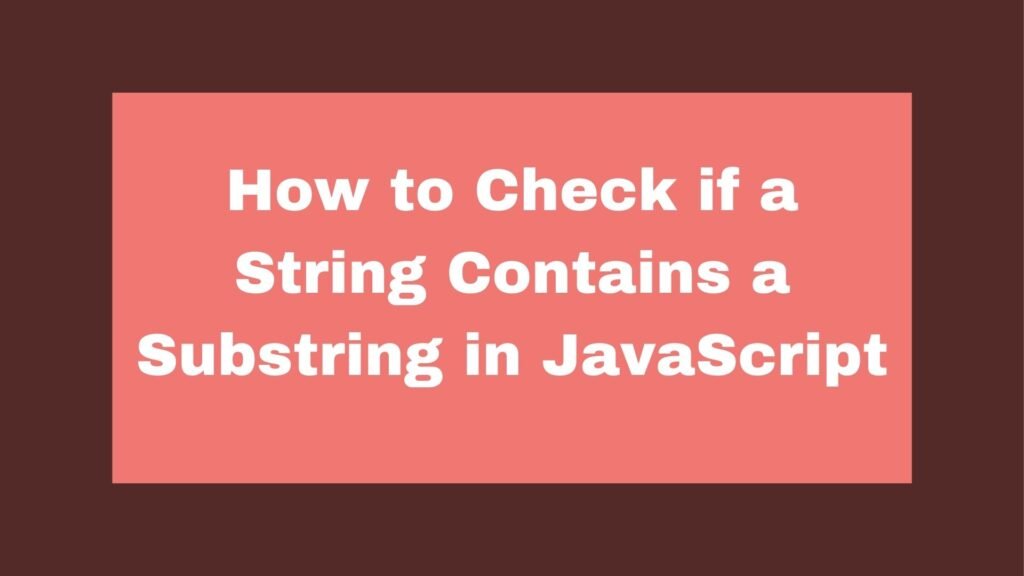
When working with strings in JavaScript, a common task is checking if a string contains a specific substring. JavaScript provides several methods to perform this task efficiently. In this guide, we’ll explore various techniques to check for the presence of a substring within a string, along with code examples and explanations.
let str = "Hello, World!";
let substring = "World";
if (str.includes(substring)) {
console.log("The substring is present!");
} else {
console.log("The substring is not present.");
}
To check if a string contains a substring in JavaScript, use the includes() method:
Methods on How to Check if a String Contains a Substring in JavaScript
Checking if a string contains a substring is a fundamental task in JavaScript, often used in validation, search functionality, and string manipulation. JavaScript provides multiple ways to achieve this, from simple methods like includes() to more complex regular expressions. Understanding these methods will help you choose the right one for your needs.
Using the includes() Method
The includes() method is a modern and straightforward way to check if a string contains a substring. It returns true if the substring is found within the string, and false otherwise.
Example 1: Using the includes() Method
let str = "Hello, World!";
let substring = "World";
if (str.includes(substring)) {
console.log("The substring is present!");
} else {
console.log("The substring is not present.");
}
Explanation:
str.includes(substring)checks ifsubstringexists withinstr.- The method returns
trueif the substring is found, andfalseif it is not.
Using the indexOf() Method
The indexOf() method returns the index of the first occurrence of a substring within a string. If the substring is not found, it returns -1.
Example 2: Using the indexOf() Method
let str = "Hello, World!";
let substring = "World";
if (str.indexOf(substring) !== -1) {
console.log("The substring is present!");
} else {
console.log("The substring is not present.");
}
Explanation:
str.indexOf(substring)returns the index where the substring is first found, or-1if it is not found.- The
ifstatement checks whether the return value is-1to determine the presence of the substring.
Using Regular Expressions
Regular expressions (regex) provide a powerful way to search for patterns within strings. You can use the test() method to check if a substring matches a pattern.
Example 3: Using Regular Expressions
let str = "Hello, World!";
let substring = "World";
let regex = new RegExp(substring);
if (regex.test(str)) {
console.log("The substring is present!");
} else {
console.log("The substring is not present.");
}
Explanation:
new RegExp(substring)creates a regular expression object based on the substring.regex.test(str)checks if the substring matches any part of the string, returningtrueorfalse.
Using the search() Method
The search() method searches a string for a match against a regular expression and returns the index of the first match. If no match is found, it returns -1.
Example 4: Using the search() Method
let str = "Hello, World!";
let substring = "World";
let regex = new RegExp(substring);
if (str.search(regex) !== -1) {
console.log("The substring is present!");
} else {
console.log("The substring is not present.");
}
Explanation:
str.search(regex)returns the index of the first occurrence of the substring, or-1if it is not found.- Similar to
indexOf(), this method allows you to check the presence of a substring.
Conclusion
JavaScript offers multiple ways to check if a string contains a substring, each with its own advantages. The includes() method is the most straightforward and modern approach, while indexOf(), regular expressions, and search() provide additional flexibility for more complex scenarios. Understanding these methods will enable you to effectively handle string searches in your JavaScript projects, ensuring that your code is both efficient and easy to maintain.


